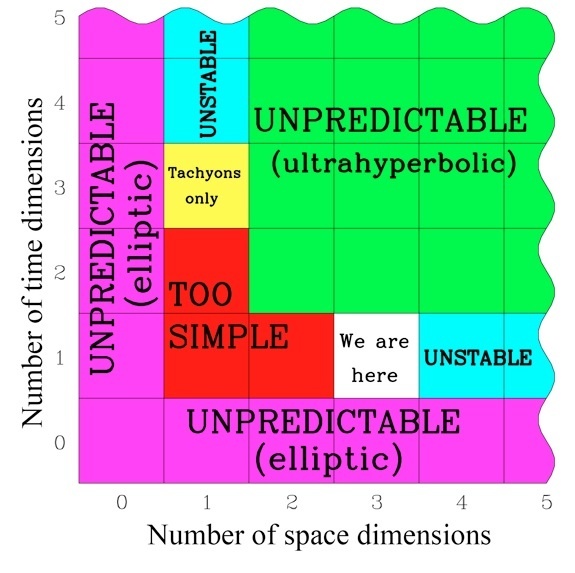Universal Habitability
In the geosciences we tend to think of habilitability as a planetary issue—liquid water, greenhouse gases, plate tectonics, not too wobbly an axis, that sort of thing. I recently finished Max Tegmark’s Our Mathematical Universe (2014, New York: Alfred A. Knopf) and it puts habitability in a broader context. Here’s his mindblowing, if somewhat garishly-colored, chart:
Tegmark’s coming up with the parameters that make up a habitable universe, namely the number of dimensions in space and time rather then, say, distance from the sun or axial precession. Too few dimensions and you can’t have solar systems or a lot of biological structures (Tegmark specifically calls out neural connections); too many you can’t have atoms. Add more than one dimension of time and it no longer makes sense to evolve any sort of intelligence—what’s the point of evolving a nervous system if time doesn’t unfold in a predictable way?
It’s not close to being directly relevant to my work (and while I really enjoyed the book I’d also recommend Scott Aaronson’s review, I liked seeing an exploration of how our universe is compatible with the existence of life on a very, very basic level.
Anyway, if you want to read more the paper that Tegmark adapted into that subchapter of Our Mathematical Universe is available to all in pdf form via his website.
